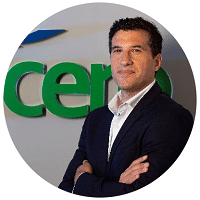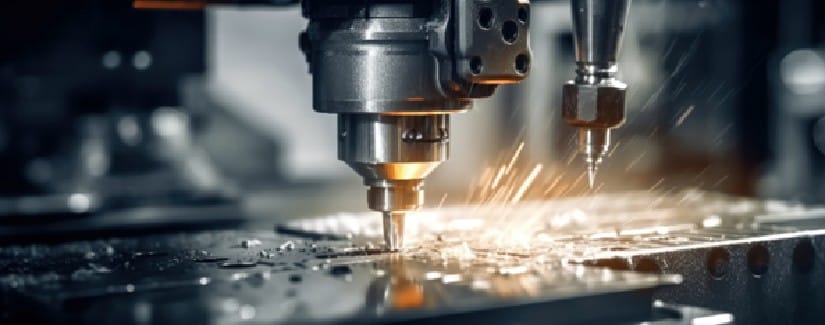The transition and sustainability goals assumed by strategic industries are essential for meeting the global challenge of environmental respect, but undertaking them in a century-old and unequal sector such as steel is especially challenging for a region like Latin America.
The steel industry is a key industry for the operation of a multitude of strategic sectors and, therefore, for global social and economic development. Latin America is strengthening its productive matrix to boost its productive fabric and gain a competitive position in the global market, but in this context, its own challenges and external pressures converge, as explained by Alejandro Wagner, executive director of the Latin American Steel Association (Alacero). “We are going through a very significant stage due to two major global trends: one is a sort of revaluation of steel as a strategic product, which is leading to a regionalization of the industry beyond the China-United States block. There is a clear rethinking of global chains that, although it already existed before the pandemic, is becoming even stronger, and we are already seeing plant relocation processes”, he says.
The other unstoppable trend has to do with the sector’s commitment to decarbonization and the fight against climate change, a more complex aspect as it is a hard-to-abate industry, referring to those whose impact is more difficult to mitigate. This rating is given by the intensive use of energy used to produce steel, an element that cannot cease to exist because it is a basic element for many other industries, although it also has an undeniable sustainable potential. “There are many studies that prove it. Unlike others, it is 100% recyclable with relatively simple processes, because it can be reused in a blast furnace or in an electric arc, which are the two major manufacturing routes for remaking it”, says Wagner.
A fair energy transition
The industry’s sustainability goals are aligned with those achieved in the Paris Agreement, although each region and each company may have its own roadmap. “Basically because they don’t all start from the same goal and they don’t all have the same production route”, he explains. “There are countries with many more economic resources than others and sectors that have state subsidies or financing tools that accelerate certain transitions. In Latin America, that almost doesn’t exist”.
One of the steps to be taken, as Alacero explains, would be the evolution of traditional blast furnaces to electric arc furnaces with low carbon emissions. “There are plants in Europe (France, Germany, etc.) that are closing blast furnaces before the end of their useful life, which is inefficient and economically negative, but they can do so because they have subsidies from the State. That is not happening in Latin America, and I don’t think it is going to happen because we are in a very different economic situation”. In this context, he talks about the fair transition, a concept that encompasses both the environmental debate and the social issue involved. Achieving it in a manner adapted to the region’s context is a challenge that organizations such as ECLAC have addressed on a recurring basis and which, at the last COP28 held in Dubai, was discussed at the highest level.
Although Alacero unreservedly supports the path towards a more environmentally friendly steelmaking activity, they warn that this path must be designed according to the characteristics of each region, as well as the restrictions. “Environmental policies cannot advance at the same speed, nor should they. If you look at the statistics, you will see that the United States, China, and Japan, along with others, account for 80% of emissions in the sector. And, although steel accounts for 8.5% of global emissions, Latin America accounts for about 3.3% of global steel production. At this point, reference should be made to the condition enacted by the UN in the Paris Agreement, which is the principle of shared but differentiated responsibilities. In other words, we all share the same responsibility, because the air is one and the planet is one, but demanding the same transition from all of us does not make sense, nor is it fair according to the reality of each country. In the case of Latin America, millions of people would be left behind with a movement that will not slow down the environmental impact”, Wagner explains.
A significant period for the industry
In addition to the fundamental sustainability goals, industry professionals are carrying out concurrent initiatives to mitigate their impact on the environment. One of the most important is reuse, as steel is 100% recoverable after each use, without losing any property. The priority method is from scrap. “Today, not everything that has a useful life is recycled, but many investments are being made to maximize the collection and use of scrap in production processes”, say Alacero.
Another area that is being promoted is the use of renewable energy sources, a trend that is favored in the case of Latin America due to its favorable geography for their production. This goal is further enhanced by disruptive technologies that are optimizing the processing of steel. “These are techniques that, in reality, have been around for more than ten or twenty years, but are now being put into practice at a faster pace, although there is still a long way to go, not so much in terms of R&D but in terms of making them more competitive. The two main ones would be Carbon Capture, that is, I emit carbon, but capture it at the emission outlet to use it in other processes, and the other would be Capture and Storage, which consists of storage underground, a more complex process, but which is also a solution that is going to proliferate more and more”, says Wagner. The promotion of these initiatives, and support for the regional industry, requires a common commitment. “We have a huge opportunity to take advantage of and to be, and why not, a global clean steel production hub”, concludes Alacero’s Executive Director.
Contributors to this article:

Alejandro Wagner, Executive Director of the Latin American Steel Association (Alacero). Alacero is made up of more than 60 production and related companies that produce 65 million tons of steel per year, equivalent to 95% of the steel manufactured in Latin America. Alacero’s vision is to be the regional institution that represents the steel industry in Latin America to foster and promote its sustainability based on its importance for the region’s development.





